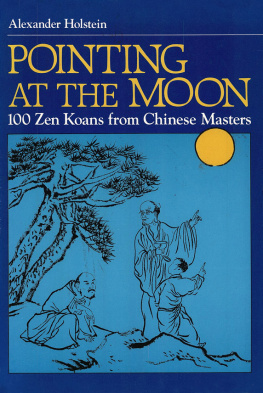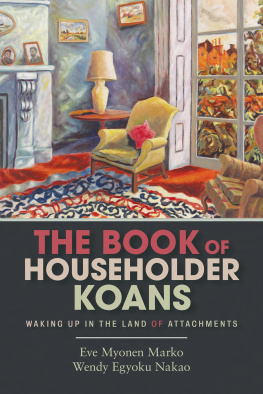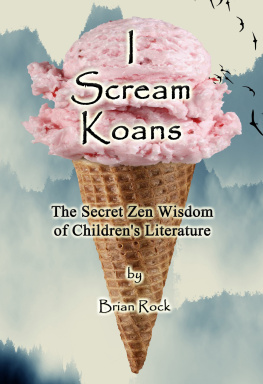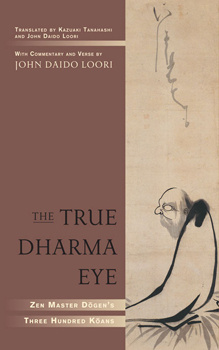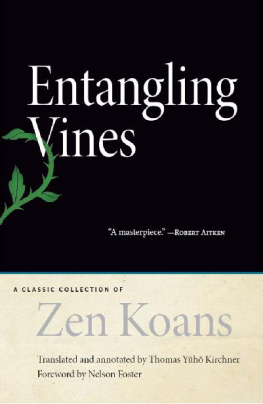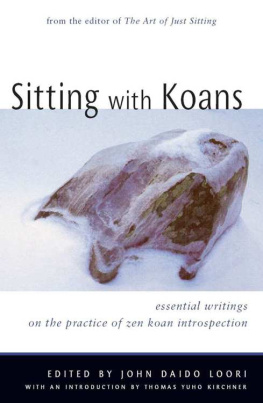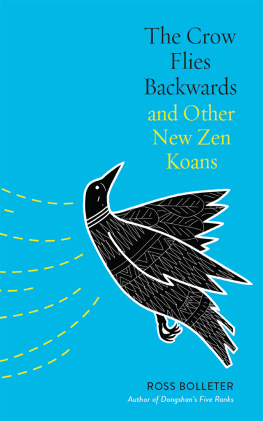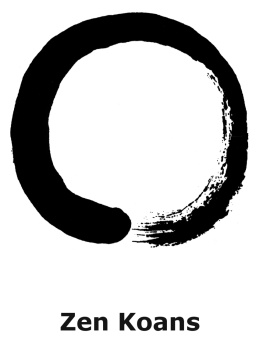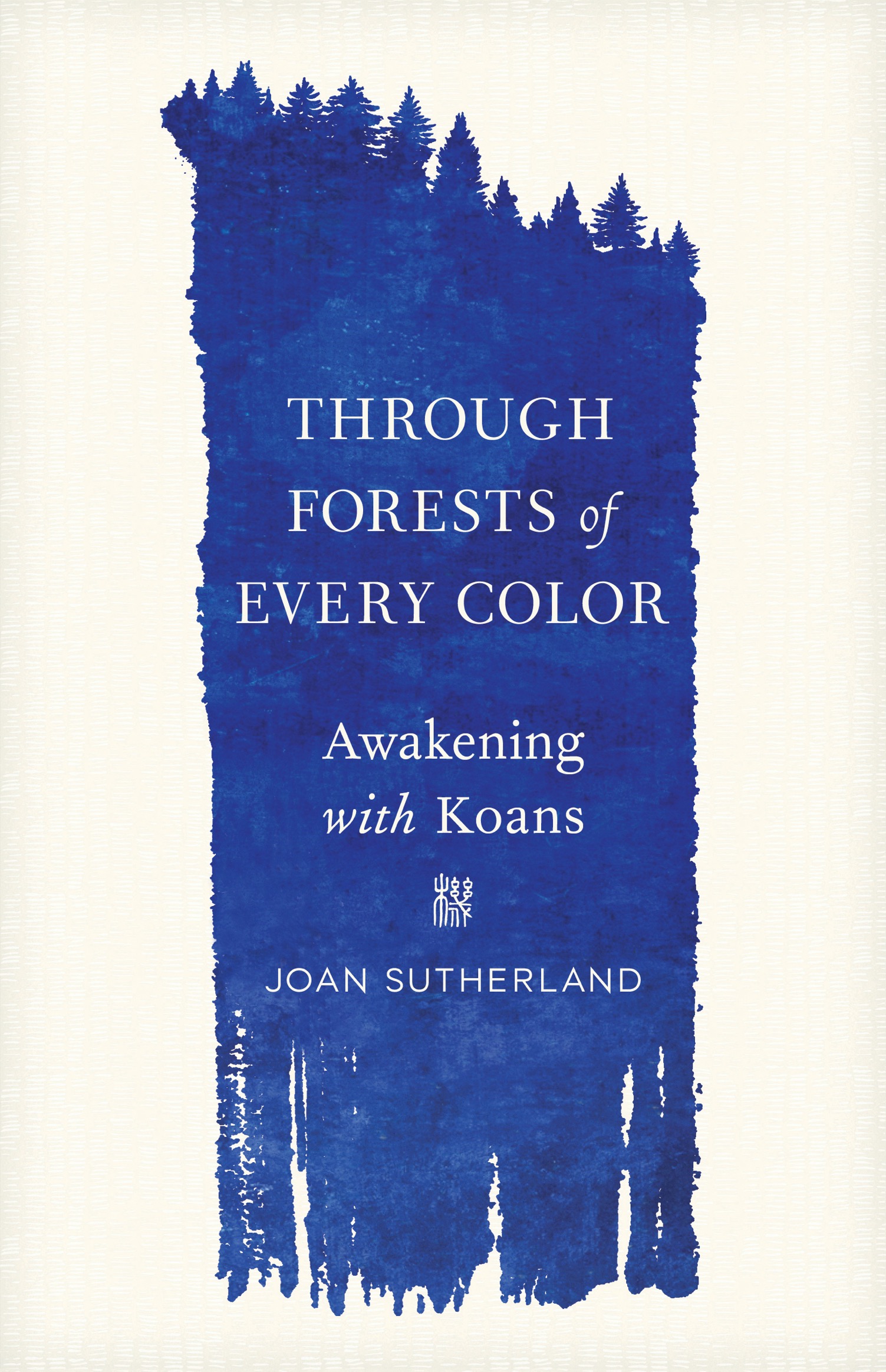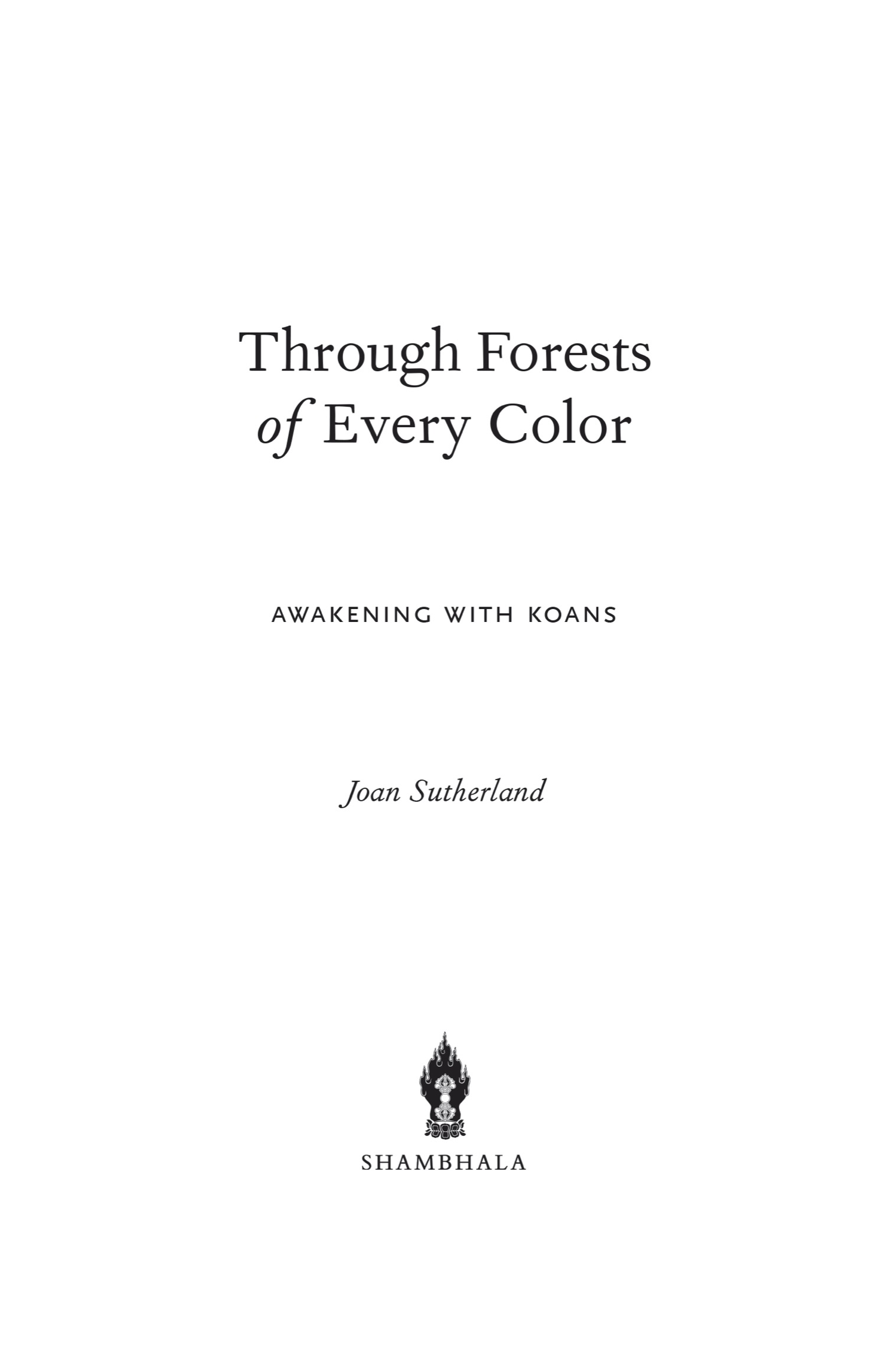PREFACE
For a long time Ive thought of the koan tradition as a giant dragon curled at the bottom of the ocean. I first had intimations of this koan dragon as a teenager, standing for hours in the aisles of a bookstore just outside UCLA, reading books on Daoism and Buddhism. That meeting inspired me to walk up the block and study classical Chinese and Japanese so that I could read the literature of these traditions in their original languages. My first gratitude is for my professors there, especially Ashikaga Sensei, who gave me koans to translate in a graduate seminar of one and who, I came to understand, was teaching me not just the vocabulary and grammar of the koans, but their heart-mind.
Every once in a while, something happens in that koan dragons dream and she stirs, lifting a shoulder or flicking her tail, murmuring to herself. The dragon apparently shrugged a shoulder in the direction of Northern California toward the end of the twentieth century, rumbling the ground under a group of people who would become the Pacific Zen Institute (PZI). We gathered around the innovative teaching of koan genius John Tarrant. Working with him immeasurably deepened my relationship with koans, as it has done for so many others, and on most days, Ive been grateful that he was foolhardy enough to invite me to become a teacher.
Those of us listening for dragon murmurs do our best to interpret, and the tradition evolves. Sometimes the transmission is clear, and sometimes we make mistakes or try experiments that dont endure. In any case, Ive never been worried about the koan dragons ability to survive even our best efforts. My cohort of listeners included David Weinstein, traveling companion in the tent revival meeting days and still a teacher at PZI, and the late Rich Domingue, who gave us the music as only he could. Then, of course, there are all the comrades and students of those early years, some of whom went on to become teachers, whose experiences and insights were crucial to the development of this koan way.
In 2003, I left PZI to found The Open Source, and the two organizations became a new koan school, the Pacific Zen School. The deep work of giving this koan way hands and eyes, shape and rhythm, began then. A group of communities that would eventually include Awakened Life in New Mexico, Springs Mountain Sangha and Wet Mountain Sangha in Colorado, Desert Rain Zen in Arizona, and Crimson Gate Meditation Community in California became the Open Source network. It was an honor to share the koans with these folks in mountain light, desert light, and candlelight. The teachers collegium of Sarah Bender, Tenney Nathanson, Andrew Palmer, and Megan Rundel guides these communities. Teaching is, among other things, hard work, and Im humbled by their graceful dedication to it, each one the holder of a unique gift.
For eight years I lived in Santa Fe, New Mexico, teaching with Awakened Life, the community that gathered there around this koan way. I started with arms full of dreams and hunches, both for koans and for community, which the Awakened Life folks brought to life in ways beyond what I could have imaginedand then they dreamed it further. The community motto is Enlightenment as a conspiracy of friends, and what a wish-fulfilling jewel that is.
Because of my health, I retired in 2015 and returned to California and the Pacific Ocean, perhaps to get a bit closer to that dragon. I no longer work directly with students, so descriptions of events in this book refer to the years when I was actively teaching. Im happy to say that all the Open Source communities are still going strong.
Hundreds of us have been dreaming koans together during these past decades. The wisdom, experiences, questions, requests, and innovations of all these people have been essential in shaping the ways of keeping company with koans described in this book.
Through Forests of Every Color has its origin in a privately printed practice text from 2013 called Acequias & Gates, which included our Miscellaneous Koans collection (more on that in the introduction) and writing about koan study. That writing has been revised and expanded for this book, which is about twice as long as the original. Piper Leigh designed Acequias & Gates around the late Ciel Bergmans paintings; their visions perfumed the text in a way that endures.
Edie Tsong, executive director of Cloud Dragon: The Joan Sutherland Dharma Works, was a generous first reader of the manuscript. Sarah Bender responded to the writing as a part of our unending dharma conversation. Im grateful to Nikko Odiseos of Shambhala Publications for taking this book on and to Matt Zepelin for being such a responsive and insightful editor. He made the book better. I bow to Samantha Ripleys care for each word in the manuscript.
Kate Cesaretti and James Sciaroni are who friendship is, and it is literally true that I could not have done most of what Ive done since my retirement, including this book, without them.
The translations are mine unless otherwise attributed. Theyve benefited from the work of generations of translators and scholars, to whom we all owe a great debt. The mistakes are my own, and I hope that at least theyre interesting.


